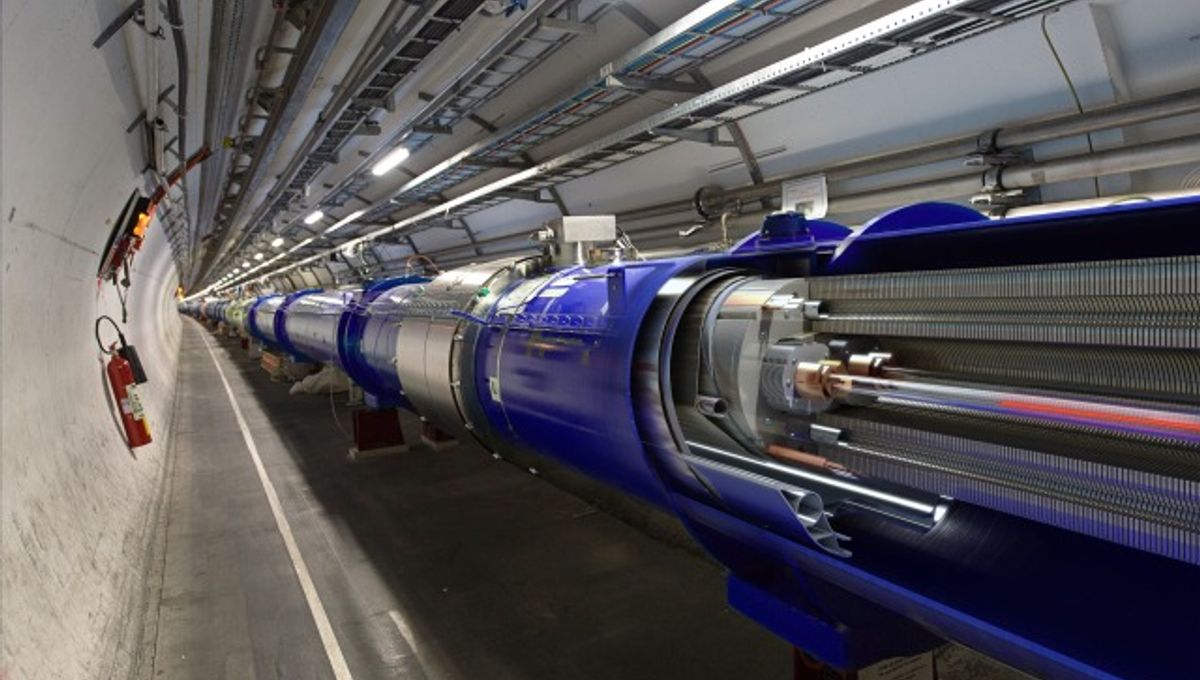
Physicists have struggled for seven decades with the question of why there is more matter in the universe than antimatter. Analysis of decay of certain subatomic particles observed using the Large Hadron Collider has provided two small pieces of the puzzle, although we’re still some way from the full picture emerging.
ADVERTISEMENT
The universe has a lot of matter, and very little antimatter. That’s a near-essential feature for life, as unless there was a way to segregate the two, a universe with equal quantities would end up with little of each as particles kept meeting and annihilating. Yet we lack a complete explanation of why this difference exists. In most ways matter and antimatter particles are symmetrical, which means the processes that bring one into being, or destroy it, create or remove equal amounts of the other.
For the universe we see, somewhere there must be an absence of symmetry – something that creates more matter or destroys more antimatter. We’ve been seeing glimpses of this for decades, finding examples of particle decays that violate symmetry, but many of them only leave a slight matter excess. The ones we know are insufficient to explain the observed imbalance in the universe.
More symmetry-breaking decays are needed, and the beauty experiment at the Large Hadron Collider was an effort to find some, while also testing some theories about the topic. Two papers analyzing its results report new examples of symmetry violation.
In 2011-2012 the LHC smashed protons together with the power only it can muster to produce many products, many of which are unstable and decay to form further particles. Certain products are of interest because they contain what are known as “charm” and “beauty” quarks – scientists got a bit silly when it came to particles quadrillions of times too small to see. Some of the particles partially composed of beauty quarks revealed two new symmetry violations.
Mesons are subatomic particles that have equal numbers of quarks and antiquarks. These don’t destroy each other, because they’re not direct counterparts. For example, a π+ pion is composed of an up quark and a down antiquark. Among other differences between the two, down quarks (or antiquarks) have more than twice the mass of up quarks, so a down antiquark can’t cancel out an up quark, only a down quark.
Nevertheless, mesons decay quite quickly, offering a crucial opportunity for symmetry to be broken. One paper reports on the decay of charged beauty mesons, composed of either a beauty quark and an up, down, strange or charge antiquark, or one of those quarks and beauty antiquark. If the universe were truly symmetrical, these two would be the same, but we know it isn’t and it turns out the decay rates differ. Faster decay of antimatter than matter is exactly the sort of thing the search for symmetry violation is looking for.
ADVERTISEMENT
A second paper found a different example of symmetry breaking, this time in beauty baryons. Baryons adhere to what was initially thought to be the core behavior of quarks, that they come in threes. At least one quark in a beauty baryon must be a beauty quark, but the other two can be many other things. Beauty baryons also decay, in their case to a different baryon and two charged K mesons.
Here again symmetry was broken in the LHC experiments, with different decay rates based on whether a beauty quark or antiquark was involved, the first time it has been found in these baryons. That’s particularly significant because the Standard Model of particle physics predicts this result, but it has never been confirmed experimentally before. The authors also looked to see whether an intermediate stage in the decay process could be responsible, in that case without success.
One of the studies is published in Physical Review Letters. The other has also been submitted for publication and is available as a preprint here.
Source Link: Beauty Quarks’ Decay May Help Explain Why The Universe Isn’t Symmetrical